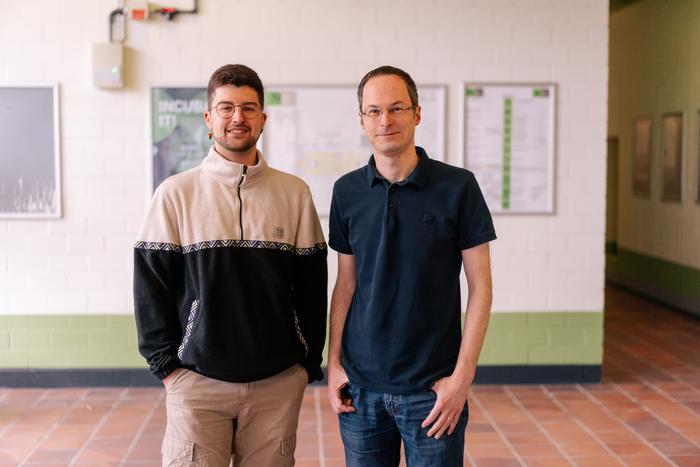Chirality in chemistry is a fascinating topic that explores the existence of molecules that are non-overlapping mirror images of one another. These molecules, called chiral molecules, possess a unique property known as handedness. The implications of chirality are profound, especially in the realm of pharmaceuticals. The complex interplay between different chiral forms means that one variant of a chiral drug may exhibit therapeutic effects while its mirror image may be harmful or even toxic. This distinction underscores why chemists strive to develop methods that facilitate the synthesis of specific chiral variants for medicinal applications.
One cutting-edge approach discovered by a team of researchers from Bochum and Mülheim involves the use of salts as catalysts to produce chiral molecules with desirable properties. By understanding and manipulating the interactions within the salts, the researchers can control the outcomes of chemical reactions to favor the formation of a specific chiral molecule. The process is both innovative and modular, raising the potential for a wide array of applications in drug development.
At the heart of this process is the concept of halogen bonding, a relatively understated yet vital force in molecular interactions. Halogen bonds occur when there is an attractive interaction between a halogen atom and an electron-rich site on another molecule. In this new method, cations—positively charged ions—initiate reactions using halogen bonds, which can be fine-tuned to enhance the synthesis of the desired chiral forms.
The role of anions—negatively charged ions—is equally significant in determining the handedness of the resulting molecules. By precisely engineering the anionic components of the salts, the research team successfully ensures that the favored chiral outcome is achieved. As one of the lead researchers, Dominik Reinhard remarked on the process, emphasizing that the introduction of the salt into a suitable solvent facilitates the necessary reactions, thereby directing the synthesis toward one desired enantiomer.
This novel approach to using salts in catalysis is noteworthy not just for its effectiveness, but for its inherent flexibility. By employing a variety of cation and anion combinations, researchers can pave the way for creating a library of salts—each capable of catalyzing different reactions. This modular system presents exciting possibilities for future research, as chemists can explore a diverse range of chemical reactions while remaining focused on producing specific chiral compounds.
Furthermore, the research undertaken represents an experimental study paving the way for innovative strategies within the field of asymmetric synthesis. By developing a method that reduces the reliance on complex equipment or hazardous conditions, this team has made strides not just in theoretical chemistry but also in practical applications that could revolutionize drug manufacturing practices.
As we consider the future implications of their work, one must reflect on the importance of chirality in everyday pharmacology. Many existing medications have chiral centers, and the realization of their potential often hinges on producing high-purity enantiomers efficiently. The researchers’ ability to manipulate molecular interactions using salts may inadvertently lead to a landscape filled with safer, more targeted treatment options for a plethora of diseases—from cancer to neurodegenerative disorders.
The article detailing this groundbreaking study, titled “Asymmetric Counteranion-Directed Halogen Bonding Catalysis,” will be published in the esteemed Journal of the American Chemical Society on March 3, 2025. This publication marks a stepping stone for future work that will undoubtedly explore the breadth of applications stemming from these findings and the ongoing exploration of chiral molecules in medicinal chemistry.
As discussions surrounding the ethical implications of drug develop take precedence, the methodologies pioneered by this research group will be significant. Their work contributes not only to the scientific literature but also fuels dialogue around the need for responsible therapy development, especially concerning adverse effects linked to mirror-image isomers. Moreover, enhancing our understanding of chirality aids in informing both policy and public perception regarding tailor-made pharmaceuticals.
In the coming years, we can expect to see an upsurge in research targeting precision medicine dictated by molecular chirality. The possibility of minimizing side effects while enhancing drug efficacy could become the new standard in therapy design. The Bochum and Mülheim team’s insights and techniques will likely influence a host of related research endeavors, driving forth an era wherein personalized medicine becomes attainable for a wider array of conditions.
Ultimately, chiral chemistry stands at the intersection of basic and applied science, presenting unique challenges and opportunities. Each step forward paves the way for prospective breakthroughs that will continue to shape our understanding of chemistry while positively impacting public health. With a spotlight on the use of salts in catalysis, the team has opened up avenues that were previously uncharted, demonstrating that even familiar molecular concepts like chirality can yield surprising innovations in the face of thoughtful research.
As the scientific community eagerly anticipates the publication of this article, the implications of this research serve as a reminder of the importance of advancing chemical sciences not merely for the sake of knowledge but for the tangible benefits they hold for humanity.
Subject of Research: Not applicable
Article Title: Asymmetric Counteranion-Directed Halogen Bonding Catalysis
News Publication Date: 3-Mar-2025
Web References: DOI: 10.1021/jacs.4c18378
References: Not applicable
Image Credits: © RUB, Kramer
Keywords
Chirality, Halogen Bonds, Asymmetric Synthesis, Chiral Molecules, Drug Development, Catalysis, Pharmaceutical Chemistry, Mirror Images.
Tags: advancing pharmaceutical applicationsBochum Mülheim research on saltschiral molecules in pharmaceuticalschirality and drug developmenthalogen bonding in chemistryinnovative methods in organocatalysismodular approaches in chemical reactionsmolecular interactions in catalysissalts in organocatalysissynthesis of chiral variantstherapeutic effects of chiral drugstoxic mirror images of chiral molecules





